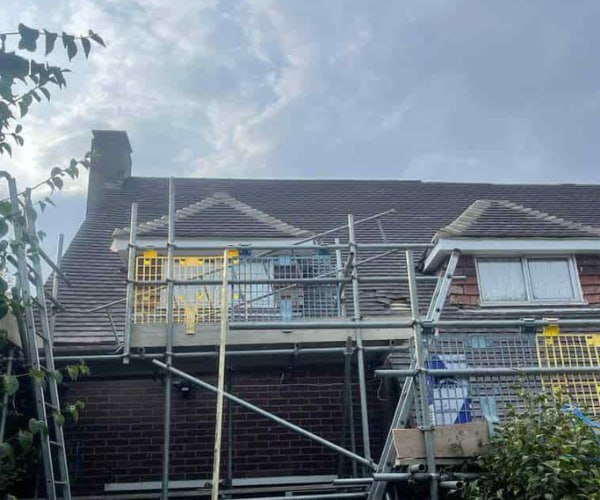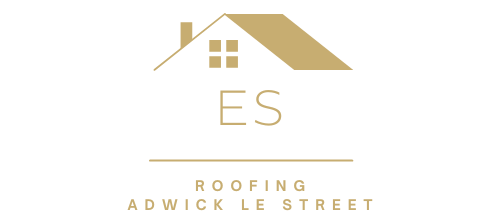Why Lead Flashing Is Critical for Commercial Roofs in High-Rainfall Areas
When it comes to protecting commercial buildings from water damage, lead flashing plays a vital role. In areas with high levels of rainfall, such as South Yorkshire, it’s especially important to ensure that your commercial roof is properly sealed and safeguarded against the elements. At ES Roofing Adwick Le Street, we specialise in providing roofing solutions that stand up to the challenges of the British climate, with lead flashing being one of the most reliable methods for preventing leaks and maintaining the integrity of commercial roofs.
What Is Lead Flashing?
Lead flashing is a material used to create a watertight seal around areas of the roof that are vulnerable to water ingress, such as joints, edges, chimneys, skylights, and vents. It is highly flexible and durable, making it an ideal choice for sealing these critical areas. Lead’s malleability allows it to be shaped around complex roof structures, ensuring that water cannot seep into gaps or joints.
Why Is Lead Flashing So Important for Commercial Roofs?
1. Superior Water Resistance
In high-rainfall areas, commercial roofs are constantly exposed to water, which can cause leaks and water damage if not properly sealed. Lead flashing provides an exceptionally watertight barrier, preventing water from entering the building through vulnerable areas. Unlike some other materials, lead flashing is highly resistant to corrosion, ensuring that it continues to protect the roof even in challenging weather conditions.
The ability of lead flashing to form a secure seal makes it a critical element for keeping commercial roofs free from leaks and the associated problems that water ingress can cause, such as rot, mould, and structural damage.
2. Durability and Longevity
One of the main reasons why lead flashing is so commonly used in roofing is its long-lasting durability. Lead flashing can withstand extreme weather conditions, including heavy rain, high winds, and temperature fluctuations, without cracking or degrading. This makes it an excellent choice for commercial buildings in high-rainfall areas like Adwick Le Street, where roofs are regularly exposed to challenging conditions.
With proper installation and maintenance, lead flashing can last for decades, providing a reliable barrier against water damage and reducing the need for frequent repairs or replacements.
3. Malleability and Versatility
Lead’s malleability allows it to be shaped and moulded to fit around a wide range of roof structures, including awkward angles, curves, and junctions. This versatility is particularly important for commercial roofs, which often feature complex designs, ventilation systems, and other roof penetrations.
Whether sealing around chimneys, skylights, or roof valleys, lead flashing can be customised to ensure a tight, secure fit, ensuring that no area is left exposed to the elements. This adaptability makes lead flashing one of the most effective solutions for preventing water ingress in commercial roofing.
4. Environmental Benefits
In addition to its practical benefits, lead flashing is also a sustainable option for commercial roofing. Lead is 100% recyclable, making it an environmentally friendly choice for businesses looking to reduce their carbon footprint. Its long lifespan also means that fewer replacements are needed, further reducing waste and the environmental impact of roofing maintenance.
For businesses aiming to incorporate more sustainable materials into their construction and repair projects, lead flashing is an excellent choice that combines eco-friendliness with superior performance.
5. Minimising Long-Term Repair Costs
By preventing water ingress and protecting vulnerable areas of the roof, lead flashing helps to minimise the need for costly repairs down the line. Water damage can be one of the most expensive issues to address, particularly if leaks go undetected and cause damage to the building’s structure, insulation, or interior.
Installing high-quality lead flashing as part of a commercial roof’s design or repair strategy can help to prevent these issues, reducing the risk of costly repairs and ensuring that the roof remains in excellent condition for years to come.
Why High-Rainfall Areas Demand Better Roofing Solutions
In regions like South Yorkshire, where heavy rainfall is common, commercial roofs face greater challenges in maintaining their structural integrity and preventing water damage. Poorly sealed roofs can quickly become compromised, leading to leaks, damp, and even significant structural damage if left unattended.
Lead flashing offers a level of protection that is essential for commercial roofs in high-rainfall areas. By forming a durable, watertight seal around key areas of the roof, it ensures that water is kept out, even during periods of heavy rain or storms. Investing in high-quality lead flashing is one of the most effective ways to safeguard your commercial building against the long-term effects of water damage.
Conclusion
Lead flashing is a critical component of any commercial roofing system, especially in high-rainfall areas like Adwick Le Street, South Yorkshire. Its superior water resistance, durability, and adaptability make it an ideal solution for preventing leaks and protecting vulnerable areas of the roof. At ES Roofing Adwick Le Street, we understand the importance of high-quality roofing solutions, and we are committed to providing lead flashing installations that ensure long-term protection for your commercial building.
Call us on: 01302 490 482
Click here to find out more about ES Roofing Adwick Le Street
Click here to complete our contact form and see how we can help with your Roofing needs.

